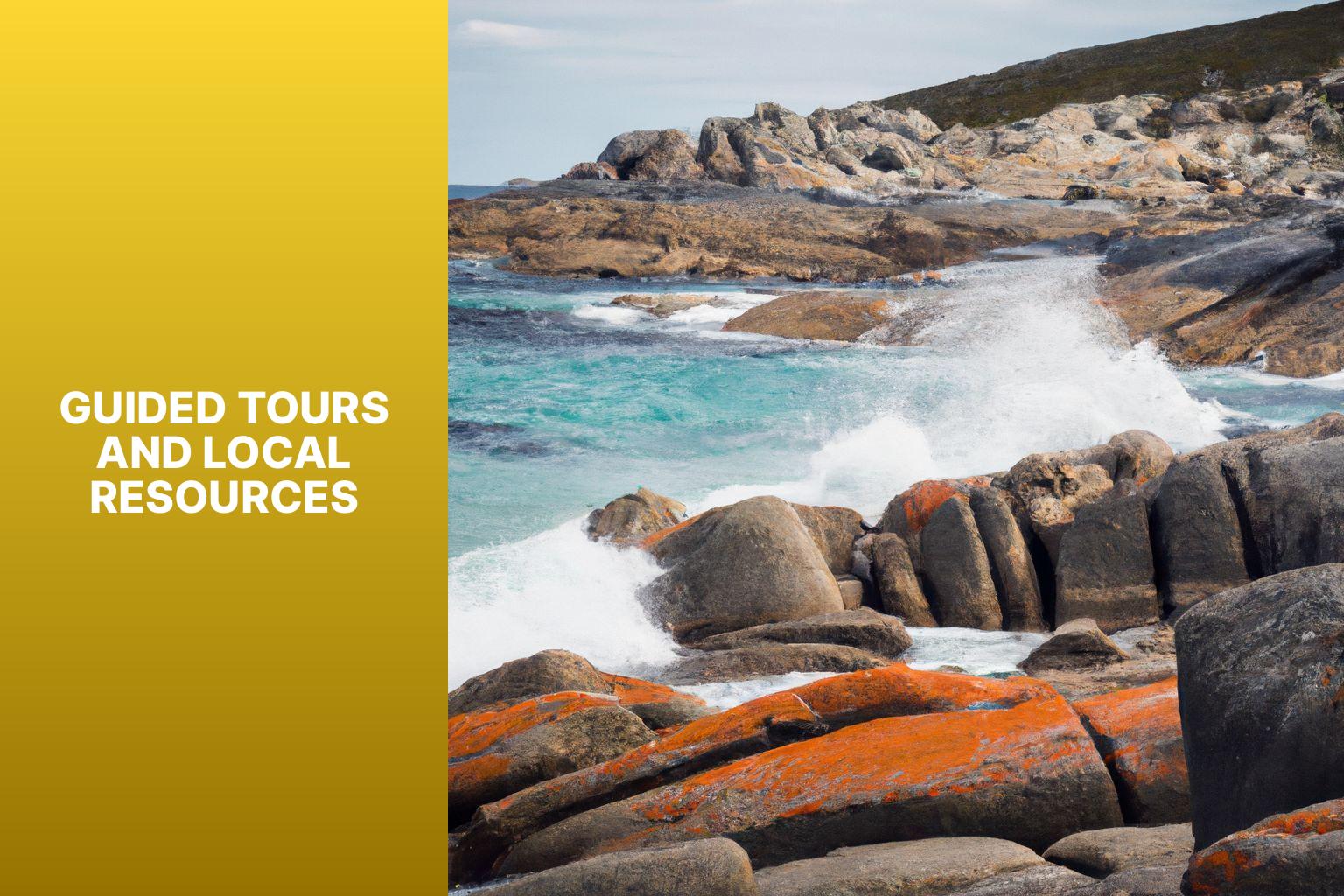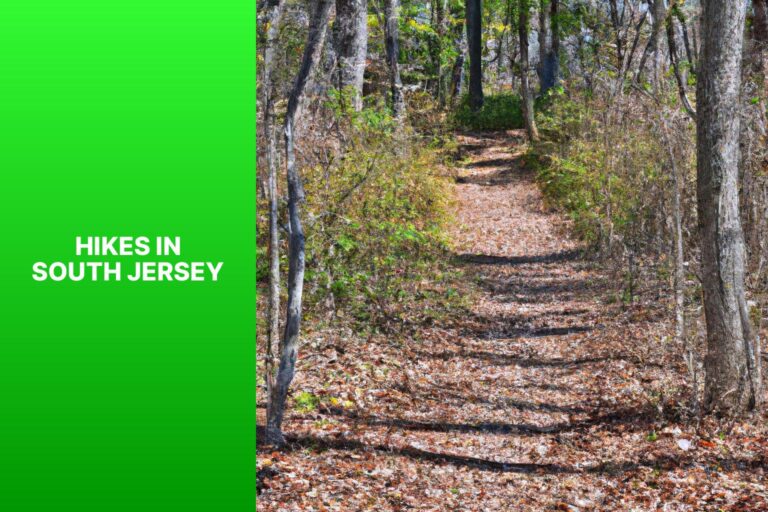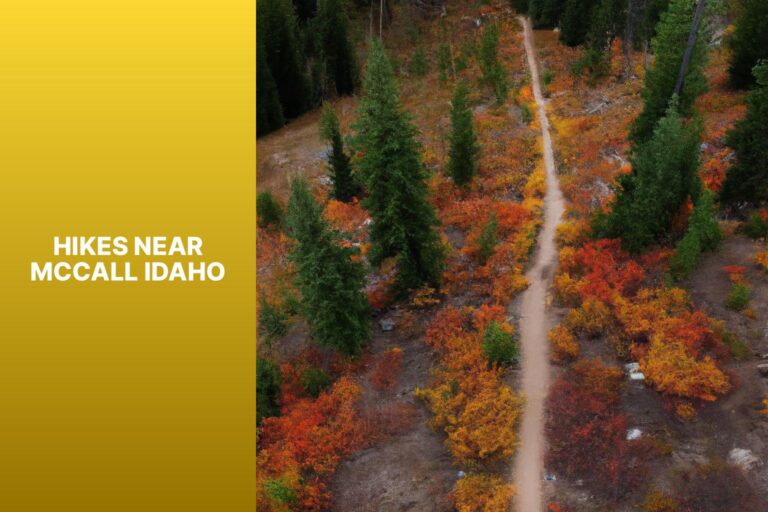Where Can You Hike the Bay of Fires
The Bay of Fires, located in Tasmania, Australia, is a pristine coastal region known for its stunning landscapes, crystal-clear waters, and iconic orange-colored rocks that line the shore. While it may be famous for its beaches, the Bay of Fires is also a fantastic destination for hiking enthusiasts. Offering a diverse range of trails and breathtaking views, this region provides an unforgettable hiking experience. Whether you’re a seasoned hiker or a beginner, the Bay of Fires has something for everyone. In this article, we will explore the location of the Bay of Fires, what makes it special for hiking, popular hiking trails in the area, things to consider before hiking, precautions and safety tips, what to pack for a hike, and information on guided tours and local resources. So, get ready to lace up your boots and discover the beauty of the Bay of Fires on foot.
Key takeaway:
- The Bay of Fires offers breathtaking hiking trails: The Bay of Fires is home to spectacular hiking trails that allow visitors to immerse themselves in the beauty of the area.
- The Bay of Fires is located in Tasmania, Australia: Located in the northeastern part of Tasmania, the Bay of Fires is known for its pristine white sandy beaches, crystal clear waters, and unique rock formations.
- Proper planning and preparation are essential for a successful hike: Before embarking on a hike in the Bay of Fires, it is important to obtain the required permits, gather the necessary equipment and gear, and consider the weather and season to ensure a safe and enjoyable experience.
Where is the Bay of Fires Located?
The Bay of Fires is located in Tasmania, Australia. It is a popular tourist destination known for its stunning coastline and crystal-clear waters. The bay stretches along the northeastern coast of the island, from Binalong Bay to Eddystone Point.
The area gets its name from the vibrant orange lichen that covers the granite rocks along the shore, giving the appearance of the coastline being on fire. To reach the Bay of Fires, you can fly into Launceston Airport, the closest major airport, and then drive for about two hours. Alternatively, you can drive all the way from Hobart, which takes approximately three hours.
Once at the Bay of Fires, you can explore the sandy beaches, swim in the clear waters, and snorkel to see the colorful marine life. There are also walking trails that offer breathtaking coastal scenery. Camping is available in designated areas, allowing you to fully immerse yourself in the bay’s natural beauty.
Whether you love nature, beaches, or photography, the Bay of Fires is a must-visit destination. Its picturesque landscapes and unique rock formations make it a truly special place to explore and admire.
What Makes the Bay of Fires Special for Hiking?
The Bay of Fires is special for hiking because of its exceptional hiking opportunities, unique features, and natural beauty. The pristine beaches with their white sand and crystal-clear waters provide a stunning backdrop for hiking, creating a picturesque and breathtaking setting. What sets the Bay of Fires apart are the iconic orange-colored granite rocks along the coastline, covered in vibrant orange lichen. These rocks contrast beautifully with the blue ocean and sandy beaches, adding a touch of uniqueness to the hiking experience.
The Bay of Fires offers a diverse range of trails suitable for hikers of all levels. Whether you prefer a short walk or a multi-day trek, there are options available to cater to both novice hikers and experienced adventurers.
One of the highlights of hiking in the Bay of Fires is the abundant wildlife. As you explore the trails, you can observe unique flora and fauna, including kangaroos, wombats, and various species of birds. The presence of these animals adds to the allure of the area and provides opportunities for amazing wildlife encounters.
Popular Hiking Trails in the Bay of Fires
Looking to explore breathtaking hiking trails in the mesmerizing Bay of Fires? Look no further! In this section, we will uncover the popular hiking trails that allow you to immerse yourself in the stunning natural beauty of the region. From the enchanting Bay of Fires Walk to the captivating Cosy Corner to Binalong Bay trail, and the majestic Mount William National Park, get ready to embark on memorable adventures and discover the wonders of this idyllic coastal haven. Lace up your hiking boots and get ready to be amazed!
The Bay of Fires Walk
The Bay of Fires Walk is a popular hiking trail in the Bay of Fires region. It offers stunning coastal scenery, including pristine beaches, crystal-clear waters, and unique orange-hued rocks. The trail is approximately 28 kilometers long and can be completed in about three days.
During the walk, hikers can explore secluded coves, spot wildlife, and enjoy breathtaking views of the Tasmanian wilderness. The trail has a mix of coastal tracks and rocky sections, suitable for both experienced and novice hikers.
One highlight of the walk is the opportunity to camp on the beach. There are designated campsites where hikers can set up their tents and enjoy the starry sky. It’s important to obtain permits and make bookings for camping.
When preparing for the walk, pack appropriate hiking gear including a sturdy backpack, comfortable shoes, warm clothing, a good sleeping bag, and enough food and water. Check the weather and season before starting, as conditions can change quickly in the region.
Pro-tip: Bring a camera to capture the stunning landscapes and wildlife encountered during the Bay of Fires Walk.
Cosy Corner to Binalong Bay
The Cosy Corner to Binalong Bay trail in the Bay of Fires offers stunning coastal scenery and a chance to experience the natural beauty of the area. Here are some things to know about this hike:
- Scenic views: The trail provides breathtaking coastal views with pristine white sandy beaches, crystal clear turquoise waters, and vibrant orange-hued rocks.
- Distance: The trail covers approximately 8 kilometers, making it a moderate hike suitable for most fitness levels.
- Time: It typically takes around 3-4 hours to complete the hike, depending on your pace and the time spent enjoying the scenery.
- Difficulty level: The trail is relatively easy, with mostly flat terrain and well-marked paths. It’s important to wear appropriate footwear and be prepared for uneven surfaces.
- Wildlife spotting: Keep an eye out for dolphins, whales, and various bird species along the trail. The Bay of Fires is home to a diverse range of flora and fauna.
The Bay of Fires is named after the fires made by Aboriginal people, observed by Captain Tobias Furneaux in 1773. These fires were used for cooking and heating, giving the bay its distinctive name. Today, the Bay of Fires is known for its stunning natural beauty and rich cultural history.
Mount William National Park
Mount William National Park is a popular destination for hiking enthusiasts visiting the Bay of Fires. This park offers beautiful scenery and a variety of hiking trails to explore.
One of the popular trails in Mount William National Park is the Mount William Summit Walk. This challenging trail takes you to the highest point in the park, offering panoramic views of the coastline and the Bay of Fires. The trail is 13 kilometers long and takes about 4-5 hours to complete. It is recommended to start early in the morning to avoid the heat.
Another trail worth exploring is the Bay of Fires Walk, which passes through parts of the park. This multi-day walk takes you along the beaches, headlands, and bays of the Bay of Fires coastline. It allows you to experience the natural beauty of the area.
Before hiking in Mount William National Park, it is important to be well-prepared. Check the weather conditions and pack appropriate clothing, food, and water. Carry a first aid kit and a park map. Follow park regulations and leave no trace of your visit.
A visit to Mount William National Park provides hikers with an opportunity to explore the stunning landscapes of the Bay of Fires. Whether you choose the challenging Mount William Summit Walk or the multi-day Bay of Fires Walk, you will be amazed by the beauty of this national park. So put on your hiking boots and get ready to discover the wonders of Mount William National Park.
Things to Consider Before Hiking in the Bay of Fires

Photo Credits: Jasonexplorer.Com by Paul Miller
Before embarking on a memorable hiking adventure in the stunning Bay of Fires, there are a few crucial aspects to keep in mind. From acquiring the necessary permits and making bookings, to ensuring you have the right equipment and gear for the journey, and understanding the weather conditions and ideal season for hiking – this section will provide you with essential insights and tips to maximize your experience in this breathtaking coastal landscape. So strap on your hiking boots, because we’re about to uncover all you need to know before venturing into the captivating Bay of Fires.
Required Permits and Bookings
To hike in the Bay of Fires, you must consider the necessary permits and bookings, as outlined in the following table:
| Permit or Booking | Information |
| Parks Pass | All visitors entering the Bay of Fires Conservation Area must possess a Parks Pass. It can be purchased either online or at visitor centers. |
| Camping Permit | If you plan to camp overnight in the Bay of Fires, you are required to obtain a camping permit. It can be acquired online or at the parks office. This permit grants you access to a designated camping area and specifies the duration of your stay. |
| Limited Access Areas | There are certain areas within the Bay of Fires that have limited access due to conservation efforts. Before embarking on your hike, please check for any restrictions or closures. |
| Peak Season Bookings |
Please note that these required permits and bookings have been put in place to safeguard the environment and regulate the number of visitors. By obtaining the necessary permits and making the required bookings, you can ensure a responsible and hassle-free hiking experience in the Bay of Fires.
Equipment and Gear
When preparing for a hike in the Bay of Fires, having the right equipment and gear is crucial for a safe and enjoyable experience. Here is a comprehensive list of essential items to include:
– Hiking Boots: It is essential to have a sturdy pair of hiking boots with good ankle support to navigate the rugged terrain effectively.
– Backpack: Make sure to have a durable backpack that fits comfortably on your back to carry all the necessary essentials.
– Navigation Tools: Bring along a map, compass, or GPS device to help you stay on track and navigate your way effectively.
– Water and Snacks: It is important to carry an adequate supply of water and snacks to stay hydrated and maintain energy levels.
– Appropriate Clothing: Dressing in layers with moisture-wicking materials is necessary to ensure comfort in changing weather conditions.
– Sun Protection: Remember to wear sunscreen, sunglasses, and a hat to protect yourself from the sun’s harmful rays.
– First Aid Kit: Carry a basic first aid kit to address any minor injuries or ailments that may occur during the hike.
– Emergency Supplies: Always include emergency supplies such as a flashlight, whistle, and emergency blanket in case of unexpected situations.
– Insect Repellent: Apply insect repellent to keep bugs at bay and prevent discomfort.
Remember that the specific equipment and gear needed may vary depending on the length and difficulty of the hike, as well as personal preferences. Assess your own needs and make sure to have all the necessary items to ensure a safe and enjoyable adventure in the Bay of Fires.
Weather and Season
When planning a hike in the Bay of Fires, it is important to consider the weather and season for a safe and enjoyable experience. The weather in the Bay of Fires can vary throughout the year. Therefore, it is advisable to check the forecast before your hike to ensure that you are well-prepared for any conditions that you may encounter.
During the summer months, which span from December to February, the weather in the Bay of Fires is generally warm, with temperatures ranging from 20 to 25 degrees Celsius (68 to 77 degrees Fahrenheit). It is recommended to bring sunscreen, a hat, and lightweight, breathable clothing to protect yourself from the sun’s rays.
As autumn sets in, from March to May, temperatures in the Bay of Fires cool down, fluctuating between 15 to 20 degrees Celsius (59 to 68 degrees Fahrenheit). It is wise to dress in layers during this season to be prepared for cooler mornings and evenings.
During the winter months, which include June to August, temperatures in the Bay of Fires drop even further, averaging around 10 to 15 degrees Celsius (50 to 59 degrees Fahrenheit). It is essential to pack warm clothing, such as a waterproof jacket and sturdy hiking boots, to ensure your comfort during these colder periods.
As spring arrives, from September to November, temperatures gradually heat up again, reaching a range of 15 to 20 degrees Celsius (59 to 68 degrees Fahrenheit). It is advisable to bring waterproof gear during this season as there is a possibility of rain.
It is vital to keep in mind that the weather in the Bay of Fires can change rapidly. Therefore, it is crucial to always be prepared for unexpected conditions. Make sure to pack appropriate clothing and gear for the anticipated weather and season to guarantee a safe and comfortable hike.
Precautions and Safety Tips
When hiking in the Bay of Fires, it is crucial to prioritize your safety and take necessary precautions. Here are some essential safety tips to keep in mind:
- Precautions: Thoroughly research the difficulty level, terrain, and potential hazards of the trail.
- Check the Weather: Always check the forecast before heading out to avoid unfavorable conditions.
- Inform Others: Prioritize your safety and let someone know your hiking plans, including route, expected return time, and emergency contact information.
- Pack Adequate Supplies: Ensure your safety by carrying a map, compass, first aid kit, food, water, and appropriate clothing. It is also important to bring a whistle for emergencies.
- Stay Hydrated: To ensure your safety, carry enough water and drink regularly throughout the journey.
- Stay on the Trail: Stick to designated hiking trails to avoid getting lost or harming natural habitats.
- Be Mindful of Wildlife: Ensure your safety by respecting animals and maintaining a safe distance. Do not disturb habitats or feed them.
While taking precautions is important, unexpected situations can still occur. John, a hiker, recalls an incident where he got disoriented and lost in the Bay of Fires. Fortunately, his informed friend contacted the authorities, and a search and rescue team located him after a few hours. This incident emphasizes the importance of informing others about your hiking plans and prioritizing safety.
What to Pack for a Hike in the Bay of Fires?
When preparing for a hike in the Bay of Fires, it is important to know what to pack for a safe and enjoyable experience. Here is a list of essential items that should be included:
1. Sturdy and comfortable hiking shoes: These will provide support and protection for your feet during the hike.
2. Detailed map and compass or GPS device: These will help you navigate through the trails and ensure you don’t get lost.
3. Sunscreen, sunglasses, and a hat: These items are necessary to protect yourself from the harmful effects of the sun.
4. Adequate amount of water: It is recommended to carry at least one liter of water per hour of hiking to stay hydrated.
5. Lightweight and energy-rich snacks: Granola bars, trail mix, or dried fruit are great choices to keep you energized during the dog friendly hikes in Bay Area.
6. Weather-appropriate clothing: It is important to wear layers and bring a waterproof jacket in case of unexpected weather changes.
7. Basic first aid kit: This should include band-aids, antiseptic wipes, and pain relief medication in case of minor injuries.
8. Insect repellent: This will protect you from mosquitoes and ticks that can be present in the area.
9. Comfortable backpack: Make sure to choose a backpack that is comfortable to carry and has enough storage space for all your essentials.
When packing for your hike, prioritize safety, comfort, and protection from the elements. Consider the duration of the hike, weather conditions, and your personal preferences. Before starting your hike, always double-check your packing list to ensure you have everything you need.
Guided Tours and Local Resources

Photo Credits: Jasonexplorer.Com by Gabriel Adams
Guided Tours and Local Resources
When planning a hike in the Bay of Fires, it is essential to use guided tours and local resources for a better experience and safety.
1. Guided Tours: Join a guided tour for valuable insights into the region’s history, wildlife, and cultural significance. Local tour operators like Bay of Fires Eco Tours and Tasmanian Walking Company offer expert guides who can navigate the trails, provide knowledge, and guarantee a memorable adventure.
2. Local Resources: Local resources are crucial for planning and executing a successful hike. Visit the local visitor information center for maps, trail guides, and up-to-date information on trail conditions. The friendly staff can also recommend accommodations and dining options.
3. Community Support: Engage with the local community to enhance your hike. Attend community events or visit local cafes and shops to meet fellow hikers and gain insights from experienced locals. This engagement enriches your journey and supports the local economy.
By using guided tours and local resources, hikers can ensure a safe and enriching experience in the Bay of Fires. Remember to plan ahead, respect the environment, and follow regulations or guidelines provided. Immerse yourself in the landscape’s beauty and embrace the unique opportunities this remarkable destination offers.
Extra Information
Extra Information
- The Bay of Fires is located on the northeastern coast of Tasmania, Australia.
- The hike offers stunning coastal scenery with white sandy beaches, clear waters, and iconic orange granite rocks.
- The trail stretches for approximately 30 kilometers from Binalong Bay to Eddystone Point.
- There are campsites along the trail where hikers can set up tents and spend the night.
- The best time to hike the Bay of Fires is during the summer months of December to February when the weather is pleasant and the days are longer.
- Hikers should bring plenty of water, sunscreen, insect repellent, and appropriate clothing.
- Practice Leave No Trace principles and respect the natural environment by not littering and avoiding damage to vegetation.
- Obtain necessary permits and check for any trail restrictions or closures before starting the hike.
Pro tip: Take your time to fully immerse yourself in the natural beauty of the Bay of Fires. Stop to appreciate the views, explore coves, and maybe spot wildlife along the way.
Frequently Asked Questions
Where can you hike the Bay of Fires?
The Bay of Fires offers several stunning hiking trails, including the Bay of Fires Lodge Walk, Goblin Forest Walk, Halls Falls Track, Wukalina Summit Track, Moon Valley Rim Walk, Binalong Bay Loop, and Cosy Corner walk.
What is the distance of the Bay of Fires Lodge Walk?
The Bay of Fires Lodge Walk is a 9km hike that takes you through the breathtaking landscape and wildlife of Tasmania’s northeastern coast.
What are the highlights of the Bay of Fires hike?
The Bay of Fires hike offers stunning beach scenery, crystal clear waters, orange-colored rocks, and the opportunity to see fascinating wildlife such as echidnas, black swans, wallabies, and wombats.
What amenities are available at the Forester Camp during the Bay of Fires Lodge Walk?
At the Forester Camp, guests can enjoy comfortable accommodations, an ocean dip, pinot wines, and delicious meals.
What activities are offered at the Bay of Fires Lodge during the hike?
The Bay of Fires Lodge offers various activities such as foot spas, library time, outdoor baths, spa treatments, fishing, and a Tasmanian long-table dinner.
Is there mobile phone service during the Bay of Fires hike?
No, there is no mobile phone service during the Bay of Fires hike, allowing guests to truly disconnect and enjoy the unspoiled environment.







